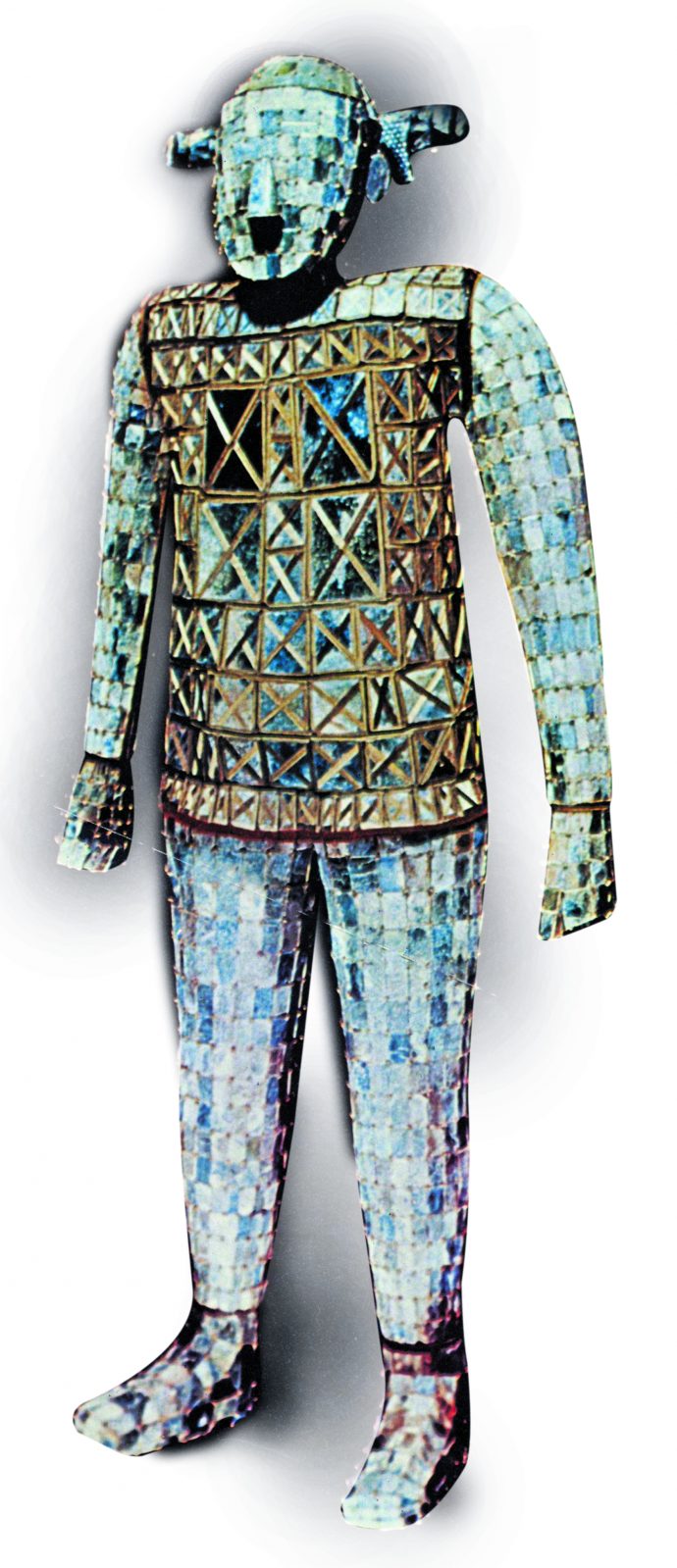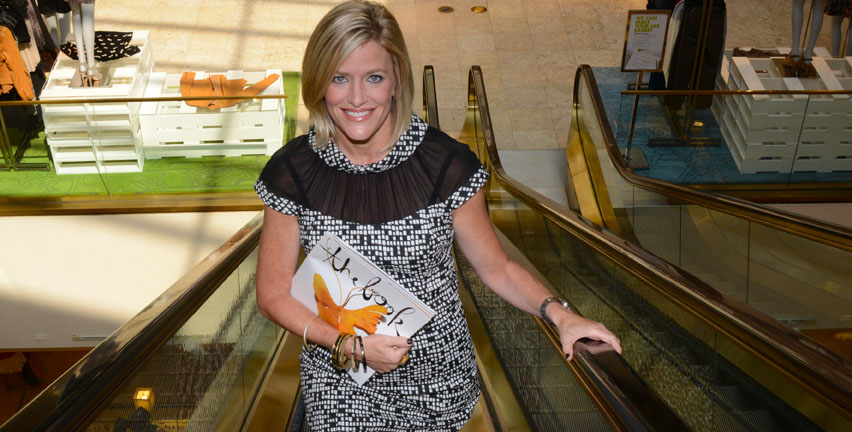Photograph by Audrey Ronning Topping
Of all the power suits in the world, the Chinese jade ceremonial suit is arguably the most powerful suit. Made of square jade tiles sewn together with gold or silver wire, the ancient suits, popular with Han Dynasty emperors, were top-of the line burial suits and astronomically expensive. These revered ancient artifacts are not generally available today, but in 2011 an inscrutable entrepreneur, Xie Genrong (pronounced perhaps fittingly “she gone wrong”), bought a bunch of these jade tiles on the open market and constructed two burial suits sewn together with plastic fishing line. Xie was alleged to have used these homemade suits as collateral for illegally obtaining some 700 million RMB (about $113,678,000 today) in loans from the China Construction Bank.
Only the emperors and wealthy aristocrats could afford to be buried in jade suits, which resembled suits of armor. Jade was believed to hold the essence of mountains and have the power to keep corpses from decaying: When Chimei rebels raided Emperor Gaozu’s tomb in the second century, they found the bodies of the emperor and empress intact.
For centuries many archaeologists believed that the jade burial suits were only myths or legends, but the startling discovery in 1968 of two complete suits in the tombs of Liu Sheng and Dou Wan in Hubei proved their existence. One suit consisted of 2,498 plates of solid jade connected with two and a half pounds of gold wires. Since then they have become national treasures. Many more jade suits have been discovered in ancient tombs and exhibited around the world. The process of creating one was labor-intensive: It is estimated to have required more than 100 craftsmen two years to complete a single suit.
But in spite of this, the resourceful Xie Genrong was able to create two jade suits out of leftover jade and fishing wire that fooled the experts. He knew it was a gamble. Chances were that the average banker didn’t know snap about antiques, so he declared the suits to be priceless items from his own collection. But the bankers weren’t that stupid. They demanded an authentic appraisal. Enter the middleman Niu Fuzong, an expert for a Beijing TV program called “ Treasures of the World.” He helped Xie Genrong put together an impressive team of five experts, including respected academics from China’s Palace Museum. The connoisseurs authenticated Xie’s unique ensembles as antique and gave the bank an estimation of stellar value. They all agreed that the suits were worth 2.4 billion RMB. Xie was quite pleased with himself. He got his loan and everyone down the line was paid off. As a reward the academics shared hundreds of thousands of appraisal fees with middleman Niu Fuzong. Everyone celebrated with Mou-tai, which they sipped out of authentic imperial jade wine cups.
Now the plot thickens. Someone found out about all this skullduggery and legal trouble developed. Fear of punishment resulted in finger pointing. The academics began to blame each other. One acute expert claimed immunity from liability because of academic freedom: Whether the appraisal was accurate or completely wrong was irrelevant, you see. The members of the academy were involved in a scholarly pursuit. One of the experts even made the excuse that since the jade suits were inside a glass case when they were examined, they’d be hard to authenticate. Unfortunately, in the middle of it all, one of the academics died of a heart attack. Since he could not defend himself he drew a lot of fire. They all blamed the dead guy, for as they say, dead men tell no tales.
Chinese reporters loved this story for many reasons. They admired the entrepreneurial spirit of Xie Genrong. They laughed at the fools at the China Construction Bank for giving him such a huge loan and applauded the exposure of the utterly corrupt academic experts and the creepy henchman-like work performed by middleman Niu, who made everything possible. The reporters also used this story of the jade suite hoax as an example of widespread allegations in China of corruption among experts in the antique business, which has become a metaphor for a society in which the highest forms of knowledge sometimes becomes a means to an end.




